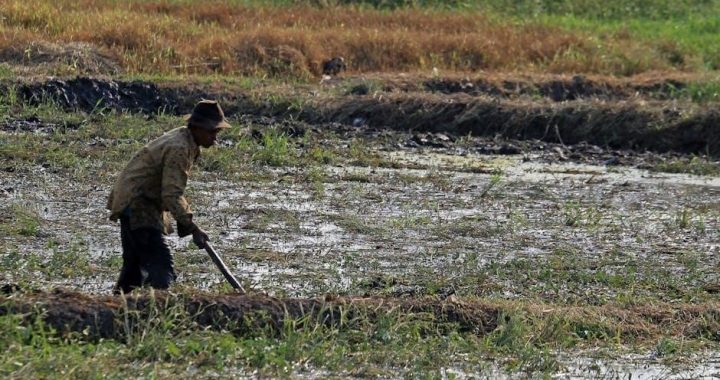The Corps of Engineers Wetlands Delineation Manual provides guidelines for identifying wetlands under the Clean Water Act. It uses a multiparameter approach, considering hydrophytic vegetation, hydric soils, and wetland hydrology. Regional supplements adapt the methodology to specific ecological regions.
Overview of the Manual’s Purpose and Scope
The Corps of Engineers Wetlands Delineation Manual provides standardized methods for identifying and delineating wetlands under Section 404 of the Clean Water Act. Its primary purpose is to ensure consistent and accurate wetland determinations by federal agencies. The manual’s scope includes guidelines for hydrophytic vegetation, hydric soils, and wetland hydrology, forming the basis for regulatory decisions. It applies nationwide but is adapted through regional supplements to address local ecological conditions. The manual is essential for maintaining water quality and ecological integrity while balancing development needs with environmental protection.
Key Concepts and Definitions
The manual defines wetlands as areas where hydrophytic vegetation, hydric soils, and wetland hydrology coexist. Hydrophytic vegetation refers to plants adapted to saturated conditions. Hydric soils are those formed under prolonged saturation. Wetland hydrology involves periodic or persistent saturation. These three parameters form the core of wetland identification. The manual emphasizes positive evidence of all three factors for accurate determinations. Regional variations are addressed through supplements, ensuring adaptability to different ecological regions. These definitions and concepts are critical for consistent wetland identifications under the Clean Water Act, supporting regulatory and environmental goals effectively.

Core Components of Wetlands Delineation
The manual outlines three core components: hydrophytic vegetation, hydric soils, and wetland hydrology. These elements must coexist for an area to be classified as wetlands, ensuring accurate delineation.
Hydrophytic Vegetation Indicators
Hydrophytic vegetation refers to plant species adapted to grow in water-saturated conditions. The manual emphasizes identifying these plants as a critical factor in wetland delineation. It provides detailed criteria and field indicators to determine if vegetation is hydrophytic, such as species tolerance for flooding or soil saturation. Positive evidence of hydrophytic vegetation is required, alongside hydric soils and wetland hydrology, to confirm a wetland. Regional supplements further refine these indicators, ensuring they align with local plant communities and ecological conditions. This approach ensures accurate and consistent wetland identification across diverse habitats and regions.
Hydric Soils Identification
Hydric soils are a critical component in wetland delineation, defined as soils that are saturated, flooded, or ponded long enough to support anaerobic conditions. The manual provides specific indicators for identifying hydric soils, such as redoximorphic features, soil morphology, and organic matter accumulation. These soils must exhibit characteristics adapted to wetland hydrology, such as gleying or mottling. Regional supplements refine these criteria to account for local soil types and climatic conditions. Positive identification of hydric soils, combined with hydrophytic vegetation and wetland hydrology, is essential for confirming wetland presence under the Clean Water Act.
Wetland Hydrology Characteristics
Wetland hydrology characteristics are defined by the presence of inundation or saturation at or near the surface. The manual specifies that wetlands must exhibit recurring or sustained water conditions sufficient to support hydrophytic vegetation and hydric soils. Key indicators include surface water, saturated soil conditions, and hydrological indicators like water tables and drainage patterns. The duration, frequency, and depth of water influence wetland classification. Regional supplements refine these criteria to reflect local hydrological variability, ensuring accurate delineation across diverse ecosystems. Wetland hydrology is a foundational element in the multiparameter approach required for wetland identification under the Clean Water Act.

Regional Supplements and Variations

Regional supplements adapt the manual to specific ecological regions, such as the Great Plains and Western Mountains, Valleys, and Coast, addressing local hydrological and vegetative conditions.
Great Plains Region Supplement
The Great Plains Region Supplement adapts the Corps of Engineers Wetlands Delineation Manual to the unique hydrological and vegetative conditions of the Great Plains. It applies to states such as Colorado, Kansas, Minnesota, Montana, Nebraska, New Mexico, North Dakota, Oklahoma, South Dakota, Texas, and Wyoming. This supplement provides region-specific indicators for hydrophytic vegetation, hydric soils, and wetland hydrology, ensuring accurate delineation in areas with distinct arid and prairie ecosystems. It includes detailed data forms and methodologies tailored to the region’s environmental characteristics, such as seasonal water tables and drought-resistant plant species, to streamline the delineation process and improve consistency in wetland determinations.
Western Mountains, Valleys, and Coast Region Supplement
The Western Mountains, Valleys, and Coast Region Supplement is tailored to the diverse ecosystems of the western United States. It addresses unique conditions such as high mountain meadows, coastal wetlands, and arid valleys. The supplement provides region-specific indicators for hydrophytic vegetation, hydric soils, and wetland hydrology, accounting for the area’s varied precipitation patterns and soil types. It includes methodologies for delineating wetlands in areas with seasonal water tables and unique plant communities. This supplement ensures accurate wetland identification in regions with distinct ecological characteristics, supporting consistent and scientifically sound determinations under the Clean Water Act.

Methodology and Procedures
The manual outlines a systematic approach for wetland delineation, emphasizing data collection, site observations, and documentation. It integrates hydrophytic vegetation, hydric soils, and hydrology assessments for accurate determinations.
Step-by-Step Delineation Process
The step-by-step process begins with preliminary planning and site reconnaissance to gather existing data. Field assessments follow, focusing on hydrophytic vegetation, hydric soils, and wetland hydrology. Vegetation is evaluated for dominance and indicator species. Soils are examined for hydric characteristics, such as color and texture. Hydrology is determined through water level measurements and observations of flow patterns. Data collection is thorough, with documentation including photographs, sketches, and detailed notes. Findings are analyzed to confirm wetland criteria, ensuring accurate delineation. This structured approach ensures consistency and transparency in wetland determinations.

Data Collection and Documentation Requirements
Data collection involves thorough field observations and measurements to identify wetland indicators. Hydrophytic vegetation is assessed for species dominance and adaptation to wet conditions. Hydric soils are evaluated based on physical characteristics like color, texture, and saturation. Wetland hydrology is determined through water level data, flow patterns, and soil moisture. Documentation includes detailed notes, photographs, and sketches of site conditions; Standardized data sheets are used to record findings, ensuring consistency and accuracy. Proper documentation supports defensible wetland determinations and regulatory compliance, providing a clear record of the delineation process and its conclusions.

Importance of the Manual Under the Clean Water Act
The manual is crucial for implementing Section 404 of the Clean Water Act, providing standardized methods to identify and protect wetlands, ensuring regulatory compliance and environmental integrity.
Section 404 Regulatory Program Overview
Section 404 of the Clean Water Act regulates the discharge of dredged or fill materials into waters of the United States, including wetlands. The Corps of Engineers Wetlands Delineation Manual is integral to this program, providing a standardized framework for identifying and delineating wetlands. It ensures consistent application of criteria for determining wetland boundaries, which is critical for issuing permits under Section 404. The manual’s methodologies help balance economic development with environmental protection, maintaining the integrity of aquatic ecosystems while allowing for necessary human activities. Its guidelines are essential for regulatory decisions, ensuring compliance with federal environmental policies. Regional supplements further tailor these criteria to local conditions.
Implications for Wetland Determinations and Permits
The Corps of Engineers Wetlands Delineation Manual plays a critical role in Section 404 permit decisions. Its criteria for identifying wetlands directly influence whether an area requires a permit for dredging or filling. Accurate delineations ensure compliance with environmental regulations, balancing development needs with ecological preservation. Misidentification can lead to legal or environmental consequences. The manual’s regional supplements adapt these criteria to local conditions, affecting permit outcomes. Its methodologies are essential for maintaining wetland integrity while enabling responsible land use, ensuring that aquatic resources are protected under federal law. Stakeholders rely on its guidelines for clear and consistent decision-making processes.
The Corps of Engineers Wetlands Delineation Manual remains a cornerstone for identifying and protecting wetlands under the Clean Water Act. As science evolves, updates to the manual will incorporate new methodologies, ensuring accurate delineations and compliance with environmental regulations. Future revisions will address emerging challenges, such as climate change impacts, to maintain wetland integrity and support sustainable land use practices. Continuous refinement of the manual is essential for balancing ecological preservation with development needs, ensuring its relevance in advancing wetland conservation efforts nationwide.
The Corps of Engineers Wetlands Delineation Manual is a foundational guide for identifying wetlands under the Clean Water Act. It employs a multiparameter approach, requiring evidence of hydrophytic vegetation, hydric soils, and wetland hydrology. Regional supplements adapt the manual to specific ecological conditions, ensuring accurate delineations across diverse landscapes. The manual emphasizes thorough data collection and documentation to support wetland determinations. By providing clear methodologies, it aids in regulating activities under Section 404, balancing environmental protection with development needs. Regular updates to the manual reflect scientific advancements, ensuring its continued relevance in wetland conservation and management.
Emerging Trends and Updates in Wetlands Delineation
Recent updates to the Corps of Engineers Wetlands Delineation Manual reflect advancements in wetland science and regulatory needs. Regional supplements now incorporate localized ecological conditions, improving delineation accuracy. Technological integration, such as GIS mapping and remote sensing, enhances data collection and analysis. Additionally, there is a growing emphasis on climate resilience and adaptive management in wetland determinations. Peer-reviewed research and interagency collaboration continue to refine methodologies, ensuring the manual remains a robust tool for balancing environmental protection with development. These updates underscore the manual’s evolution in addressing contemporary wetland management challenges effectively.
